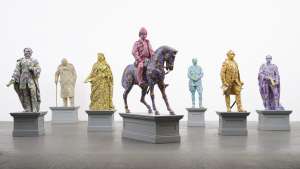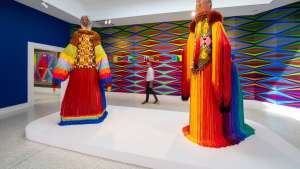Over the last two decades, the way consumers process information has completely transformed; from paperback books to e-readers, from letter writing and faxes to emails and instant-messaging.
Advertisements now have to be suitable for print, television and online consumption. While print newspapers become outdated as the internet makes news more accessible to more people.
This means that content producers need to adapt their designs to this ever-changing environment.
Bruno Maag, co-founder of Dalton Maag, is a designer helping brands keep up with the digital age through pragmatic and customised typography.
Recently, Dalton Maag has created typefaces for both Airbnb and Netflix. In these designs they have strived for a combination of adaptability for print and digital media, readability and unique branding features.
As seen in these designs, Maag believes in placing function before expression when it comes to typography.
Maag, who spoke to Design Indaba during the AGI Open in Paris, says typography is first a tool to help convey information. Therefore, more designers need to take a cognitive approach to typeface, as well as to consider languages globally. “A lot of graphic designers that I am speaking to … they’re thinking in the Latin alphabet when the reality is that there is altogether 36 different writing systems on the planet,” says Maag.
In 2017, BBC launched its new typeface, Reith, designed by Dalton Maag. Again the challenge in this project was to create a diverse typeface that could be used across all BBC media channels.
To assist with readability of the font, Dalton Maag used their knowledge of visual perception to create the Reith typeface. An example of this is with the design of the “b” and “q” with rounded edges, versus the “d” and “p” with spurs. This helps differentiate the letters which are commonly confused.
“Sometimes we get a little bit too wrapped up in ourselves and our need for artistic expression when we really should focus on the very pragmatic functions of graphic design,” says Maag.
He strives to create modern and accessible designs, such as with the Dalton Maag Aktiv Grotesk typeface. The grotesque type library is considered neutral and serious, and is widely-used for its seeming modernity. However, according to Dalton Maag, these typefaces have historically antique features. Maag hopes that Aktiv Grotesk will serve as a contemporary replacement for what he likes to call the “vanilla ice cream” of typefaces.
Aktiv Grotesk is available in 24 weights and 8 different scripts, making it a highly usable typeface worldwide.
Maag believes that typeface is a tool for empowerment, “As a graphic designer, I have the means to help someone understand information much better.” It can be used to deceive people by manipulating visual perception to hide certain content, but it can also be used to ensure that typeface does not act as a barrier to understanding content and helps consumers to process information more easily.
As digital media begins to surround our everyday-interactions, typography becomes the subtle design feature which can have a substantial effect on our information processing experience.









